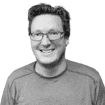Arm is landing blows on x86 amid AI frenzy
The UK-based chip designer has long dominated the smartphone market, but its designs are increasingly found in other sectors.

For years, most of the intelligent chips that run computers, servers, handheld gadgets and other equipment have divided into just two architectural camps. On one side is x86, born of US chipmaking giant Intel in the late 1970s. On the other is Arm, named after its UK-based licensor. A powerlifter of computing, fortified by an old Microsoft alliance, Intel with x86 has dominated the PC and server markets for general-purpose central processing units (CPUs). Known, by contrast, as an energy-efficiency supremo, Arm has ruled in smartphones. Neither's invasions of the other's territory have brought much success. Until now.
While Intel has dropped out of the smartphone fight, Arm has been landing blows on x86 in other sectors. Some evidence comes in a series of charts included in Arm's latest investor presentation, accompanying the publication of its third-quarter results. In 2020, Arm boasted a 42% share of all royalty revenues generated by chip architectures, leaving the other 58% to x86, mainly, and an array of smaller platforms, such as RISC-V and Tensilica. Since then, however, Arm's share has soared by nine percentage points, to 51% last year. On a market-share basis, x86 has suffered losses.
Intel, of course, generates the bulk of its revenues from product sales, rather than licenses and royalties. But the Arm data offers proof of its take-up in sectors besides the mobile-phone industry it rules. In 2016, about two thirds of Arm's revenues were earned in mobile. Today, the proportion is less than half. And Arm's annual revenues are up from about $1.69 billion in 2016 to about $2.7 billion for its last fiscal year.
Shareholders are swooning after Arm easily beat expectations for the recent third quarter. On the Nasdaq, its share price closed up 5.5% on February 7, when Arm published results, and it had gained nearly 20% in after-hours trading. The headline figures show a 14% year-over-year increase in sales, to $824 million, and 36% growth in net profit, to £305 million. Arm lifted its full-year sales guidance by 5%, to a midpoint of about $3.19 billion. It expects to spend less, too.
Beneficial tie-ups
Unlike Intel and AMD, the other big x86 player, Arm does not make chips but instead works on blueprints that are sold to about every other well-known chip company on the planet. It has benefited from a tie-up with Nvidia, which has built Arm cores (the building blocks of a CPU) into its Grace Hopper superchip. Progress in data centers has come thanks to chip investments by the Internet giants. Amazon, perhaps most notably, has relied on Arm designs to produce its Graviton range of CPUs, which support workloads in AWS facilities.
An Arm breakdown of the various sectors it is targeting shows advances across the board between 2020 and 2022, except in mobile applications, where its market share of royalties is unchanged at a monopolistic 99%. In the biggest of these other sectors, "Internet of Things" and embedded, where addressable market revenues were estimated at $42 billion last year, Arm's share rose from 58% to 65% over this period. In cloud compute, worth $18 billion in 2022, it picked up three percentage points to claim a tenth of the market. As for the $17 billion sector for networking equipment, Arm says it had 26% of the market in 2022, up from 19% in 2020.
Much of the investor excitement today stems from hype about artificial intelligence (AI) and the opportunity it presents to Arm. As noted by Richard Windsor, an analyst at Radio Free Mobile, focus is shifting from training large language models in hyperscaler data centers to AI "inference" at smaller facilities or on user devices. "More companies are choosing to license Arm for use cases outside of smartphones and tablets and, crucially, companies are choosing Arm to run AI on edge devices," he said in a blog.
Windows of opportunity
Yet the biggest threat to Intel – seemingly overlooked by Arm shareholders, according to Windsor – is an attempt by Qualcomm to put Windows on Arm chips for laptops. It comes after Apple switched from Intel to internally developed, Arm-based silicon for its own laptop processors. And it takes aim at Intel's biggest sales unit, its client computing group, where it made $29.3 billion in revenues last year.
Previous efforts to migrate Windows to Arm in this market have failed, but Arm sounds optimistic this time round after Apple's recent successes. "Hence, I think there is scope for Arm to benefit from taking share from x86 in a large market where the ASP [average selling price] of the chips is high and the processing requirement large," said Windsor.
Far less important to shareholders, but of interest to stakeholders in telecom, are signs of Arm momentum in open and virtual radio access network (RAN) technology. This tiny subsector of the RAN equipment market, expected by analyst firm Dell'Oro to generate total sales of $35 billion this year, has so far been dominated on the CPU side by Intel, which claimed a 99% market share this time last year. Yet operators keen to virtualize their networks want alternatives, and several Arm-backed ventures have recently surfaced.
Arm's broader fortunes are in stark contrast to those of Intel, whose share price has dropped 20% in the last five years. After gains last year, it fell 11% on January 26 when Intel issued disappointing financial guidance. Yet the company remains the dominant player in key markets, with a thriving ecosystem of partners and an architecture seen almost as an industry standard. An Arm wrestle won't be easy.
Read more about:
AIAbout the Author(s)
You May Also Like












